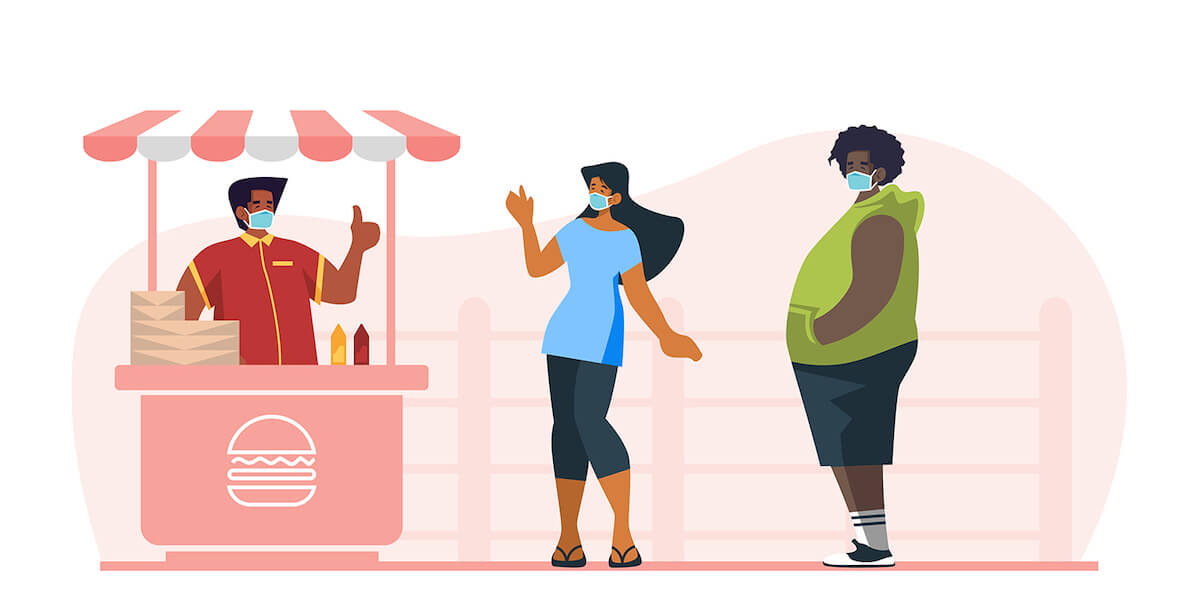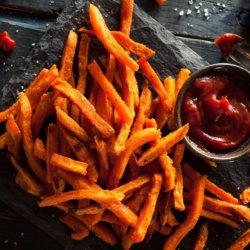July 16, 2020

Pandemics Cubed: Social Injustice and Chronic Disease Amplify COVID-19’s Virulence
America’s current response to COVID-19 ranges from “no worries” to struggling episodically to acutely overwhelmed. The uneven response has led to catastrophic disease spread and death. Setting the stage and amplifying COVID-19’s virulence are two previous and insidious pandemics.
The first and longest of these pandemics is prejudice over centuries. It merged with a second decades-long pandemic, change related to unhealthy diet and lifestyle choices. Together, these three pandemics are ravaging vulnerable segments of the U.S. population.
Social Injustice Since Inception
Racial, religious, and social injustice, now at the forefront due to multiple recent tragedies, has been a persistent noxious force since the first negro slaves arrived in Jamestown, Virginia during 1619. The short video, “Race In America” by Phil Vischer documents the racial inequity and its impact woven into the fabric of current American life.[1]
Lincoln officially abolished slavery 150 years ago, and the civil rights movement erupted 60 years ago. Despite these advances, the vast majority of blacks still live separate and apart from whites in neighborhoods characterized by massive economic inequity.
Post-Civil War vagrancy laws, Jim Crow turn-of-the-20th-century regulations, legalized discrimination, redlining, police militarization and prison expansion have increased the economic gulf between black and white families. As a consequence, black families today earn just 60% of the income of white families and hold only 10% of the wealth of white families.
More recently, inner cities devolved into fertile grounds for diseases of despair (drug addiction, suicide, alcoholism) because of persistent and systemic poverty. Good job opportunities moved to the suburbs. In 1970 about 70% of black men worked at good jobs in the city. By 1987, only 28% of blacks had similar higher paying jobs.
Home ownership is the leading method of intergenerational wealth transfer. Due to Federal Housing Administration regulations and discriminatory implementation of the post WWII G.I. Bill of Rights, blacks found limited opportunities for housing in better neighborhoods with good school systems and couldn’t get loans.[2]
As neighborhoods deteriorated, so did educational opportunities, causing self-perpetuating hopelessness. The result is astounding: one in nine black men between 20 and 35 has experienced prison time, during the ages when families typically grow. Meanwhile, the life expectancy gap between poor black and affluent white men now approaches twenty years.
Growing Fatter and Sicker
Obesity is America’s second epidemic. We are what we eat and that has become a clear and present danger to our civilized society.
Superimposed on the smoldering, persistent inequality is the change in diet over the decades. Food scientists began working generations ago to overcome famine for a fast-growing world
population. Foods like Vitamin D-fortified milk and iodized salt addressed vitamin deficiency.

Initial programs headed off famine and rickets, but created long-term, unintended consequences. Inexpensive, high-calorie-dense, long-shelve-life carbohydrate foods (e.g. boxed dry mac and cheese) “came to the rescue” with grave healthcare consequences.
Over the past fifty years, foods and the manner in which we eat have deteriorated dramatically. Americans have migrated from home cooked meals to pre-packaged foods loaded with salt,
sugar and fat. According to bestselling Salt, Sugar, and Fat: How the Food Giants Hooked Us by Michael Moss, Americans are less healthy than ever before. Diet and lifestyle are to blame.
The average American consumes 22 teaspoons of sugar and two teaspoons of salt per day. People do not even recognize their addiction to the increased sweet or salty tastes because they have become the new normal. No one would eat unadulterated processed foods – they taste like cardboard.
Food scientists have a term called the “Bliss Point,” which is a plateau where taste buds and brain receptors combine, making folks think that sweet and salty food taste good. [3] This food “science” overwhelms the body’s natural defenses to overeating. The “you can’t eat just one Lays potato chip” ads ironically illustrated the addicting nature of processed foods.
Newborns and infants like sweets. This predilection is adaptive because they need the calories to double their weight in their first six months and triple it in their first year. Infants, however, have no taste for salt until exposed to it. Once exposed, they grow up wanting more and more.
Processed foods are loaded with salt. A fast-food hamburger, for example, can contain 700 milligrams of salt, equivalent to a third of a teaspoon. This compares to a home-cooked hamburger that may have as little at 70 milligrams of salt, one tenth as much.
Fat also has remarkable powers to make food more appealing but is unhealthy in the large quantities that Americans consume. A hunk of cheddar cheese is one-third fat. Two-thirds of the calories in this cheese consist of fat.
While sugar and salt hit the tongue instantly, fat is more subtle. Food scientists describe this sensation as “mouth feel.” The wonderful sensation of premium ice cream melting in one’s mouth, the creaminess of cheesecake, or the smeared cream cheese on a toasted bagel are examples of mouth feel.
The combinations, quality and quantity of salt, sugar, and fat in American diets magnify weight gain and stimulate the onset of chronic disease. Obesity leads directly to diabetes, heart disease, hypertension, and even some forms of cancer. These conditions are bad enough on their own. With the assistance of these two virulent pandemics, the COVID-19 pandemic ruthlessly attacks the disadvantaged and dispossessed.
Overcoming the Triple Pandemic Threat
Understanding that prepackaged foods, although convenient, are addictive and unhealthy is an initial step back to a sound diet. Cooking food at home takes more effort initially but is well worth the investment in decreasing harmful side effects later in life.
Considering the increasing rates of diabetes, heart attacks, and strokes, many people have an opportunity to learn better control of food intake abound. Finland shows how.
In the 1980s, Finland had an epidemic of heart attacks and strokes due to high blood pressure caused by excess salt consumption. At that time, the average consumption per day was more than two teaspoons of salt. Most of the salt came from processed foods, which the Finnish government subsequently labeled “High Salt Content.”
The government accompanied this new labeling with an ambitious public education program. The combination had a dramatic positive effect. By 2007, Finland’s per person salt consumption dropped by one third. Deaths from strokes and heart attacks decreased by an astounding 80%.
For those who can shelter at home, COVID-19 creates an opportunity for healthier food preparation and consumption. However many Americans, particularly those in low-income families, do not have the economic ability to stay home now. Additionally, many don’t have access to healthy food or the money to buy it.
Poverty, poor diet and chronic diseases cause intense suffering, now worsened by COVID-19. The three pandemics synergistically create more harm than each does individually.
Remediations are possible. Cooking and eating at home can address food habits, leading to curing or controlling diabetes, high blood pressure, and obesity. Exercise universally improves health.
Physically distancing, handwashing, and mask wearing can decrease transmission of COVID-19. These immediate strategies for healthier eating and disease prevention offer individuals the power to lessen the pressure of the diet and coronavirus pandemics.
Mitigating prejudice is immensely more complicated. However caring, awareness, education, attitudes, and policy changes are key overall concerning all three pandemics. Together, society can make a difference. Just ask Mister Rodgers:
“We live in a world in which we need to share responsibility. It is easy to say, ‘It’s not my child, not my community, not my world, not my problem.’ Then there are those who see the need and respond. I consider those people my heroes,” — Fred Rogers
Sources
- Vischer, P. (Director). (2020). Race In America [Video file]. Retrieved July 02, 2020,
from https://www.facebook.com/1200805304/posts/10222900824848061/ - Blakemore, E. (2019, June 21). How the GI Bill’s Promise Was Denied to a Million Black WWII Veterans.
Retrieved July 02, 2020, from https://www.history.com/news/gi-bill-black-wwii-veterans-benefits - Moss, M. (2014). Salt, sugar, fat: How the food giants hooked us. New York, NY: Random House Trade Paperbacks.





